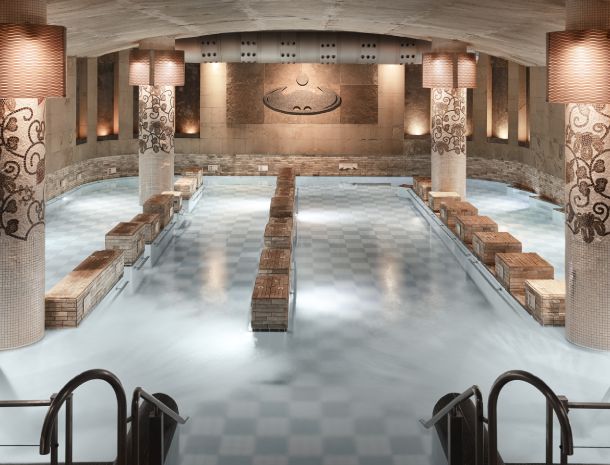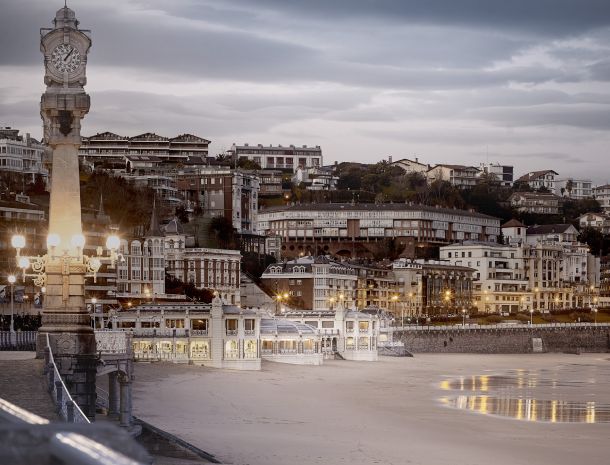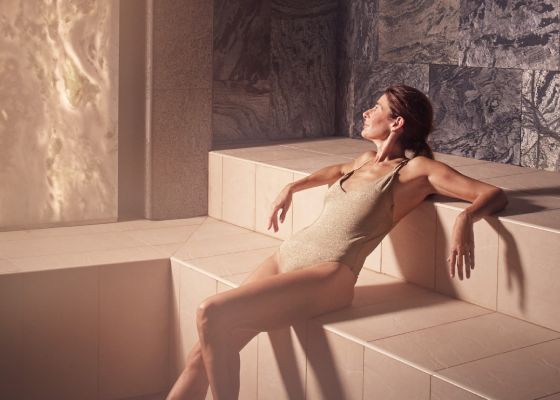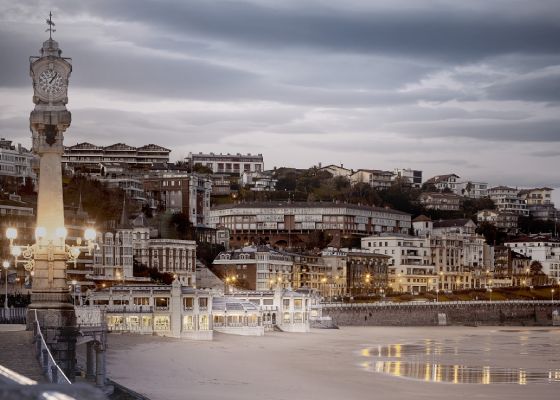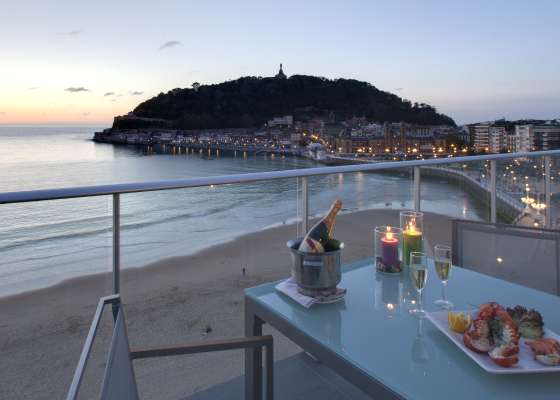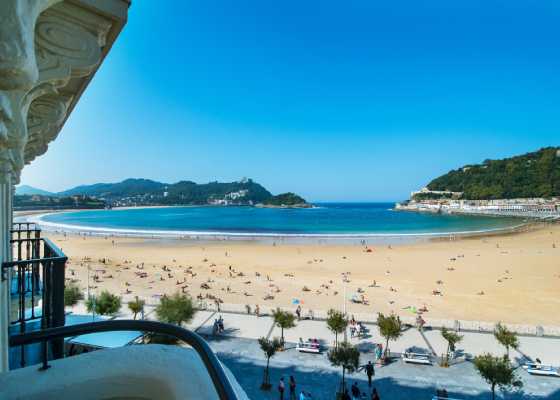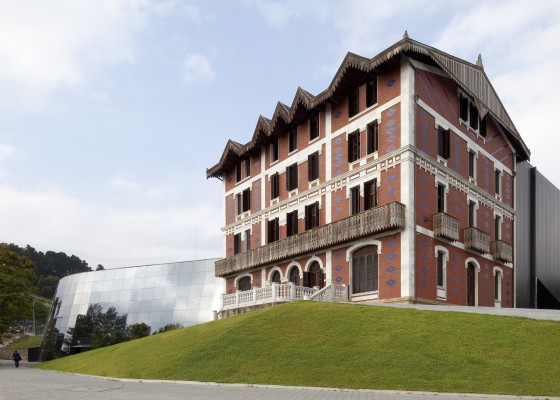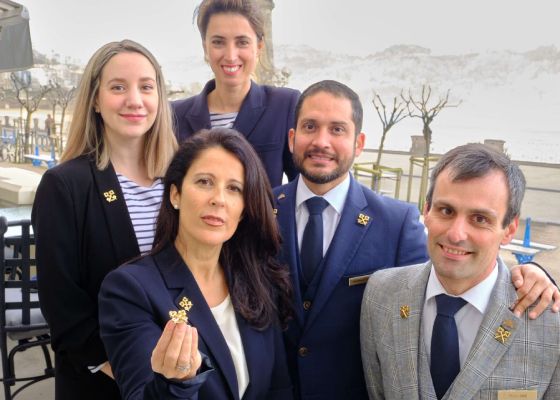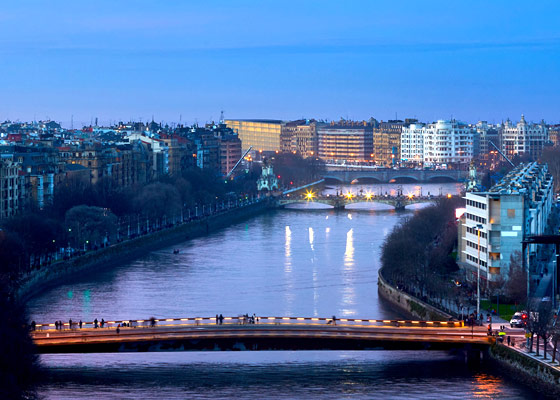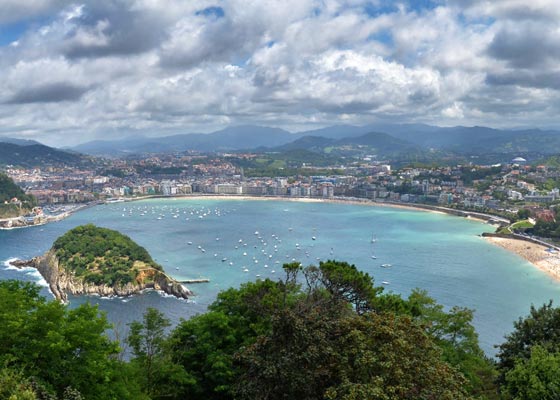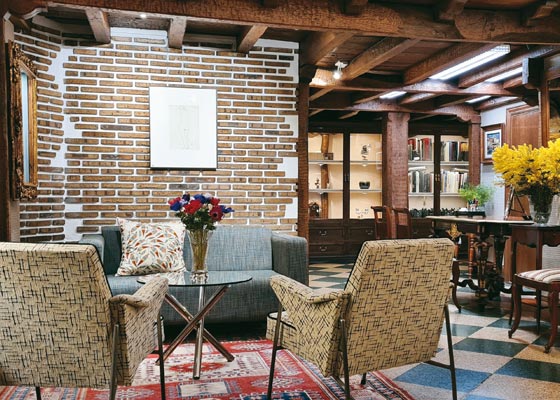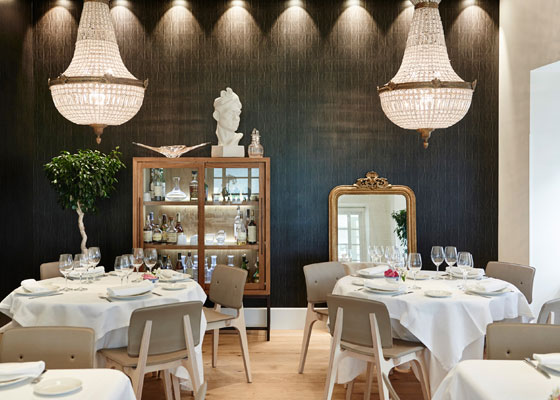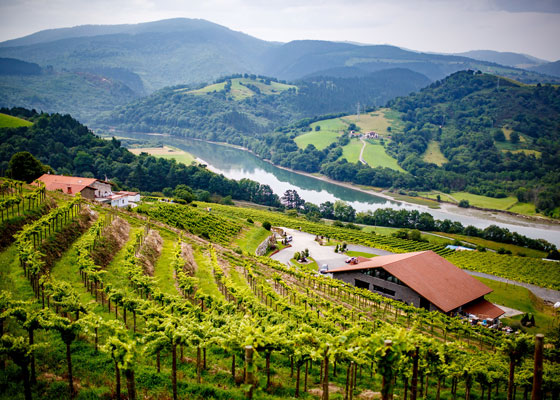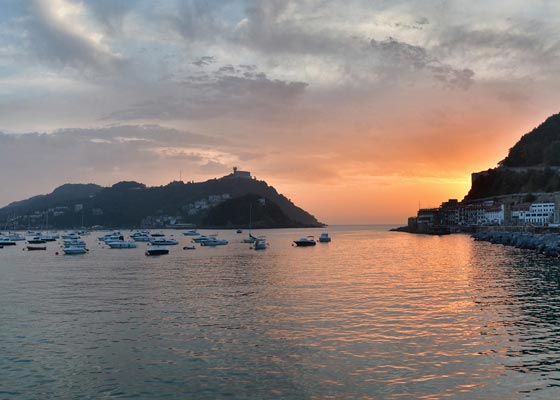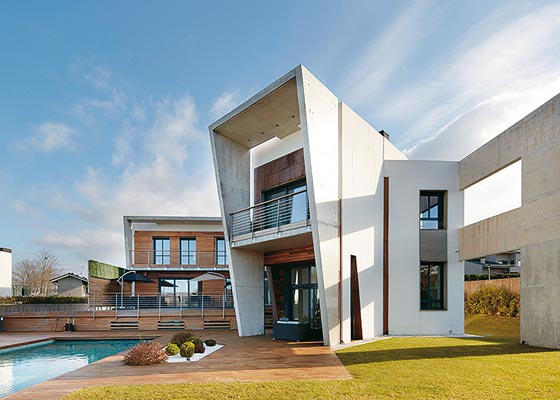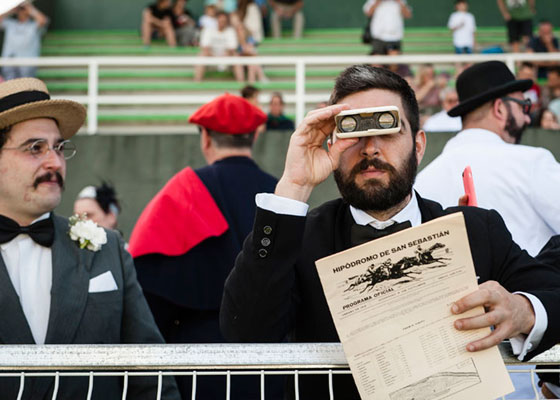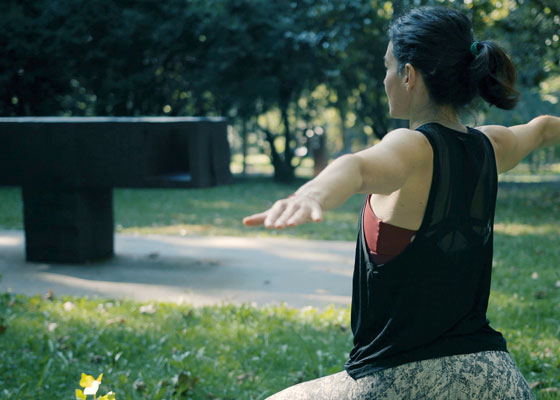Gems of architecture and design: San Sebastián's most emblematic buildings
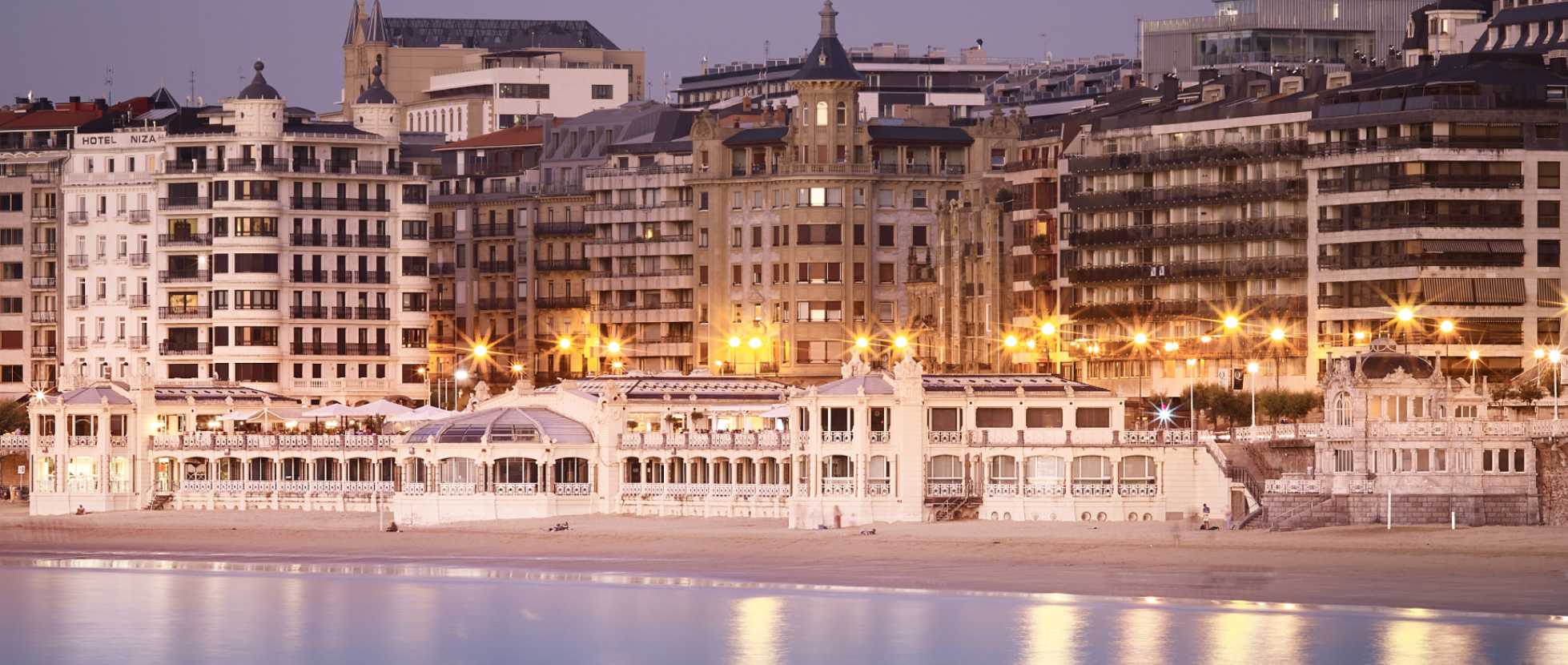
San Sebastián is a city that is very easy on the eyes. A stroll through its streets means taking in, almost simply by chance, some elegant, historic and utterly charming buildings.
Many of them date back to the Belle Époque, when the city was in its heyday. Today they are still part and parcel of the city's personality. Here are a few of these gems, with their history and some curious anecdotes.
María Cristina Hotel
The hotel was built in 1912, during San Sebastián's Belle Époque, as part of the plan to turn the city into a destination for the élite. The new hotel marked the commencement of an era of cultural and social splendour in the city. Today it still has famous guests from the world of films, culture and high society, especially during the San Sebastián International Film Festival.
A curiosity: The façade still has bullet marks from the Civil War, when it was caught in a shoot-out between opposing factions holed up inside the hotel and in the Victoria Eugenia Theatre nearby.

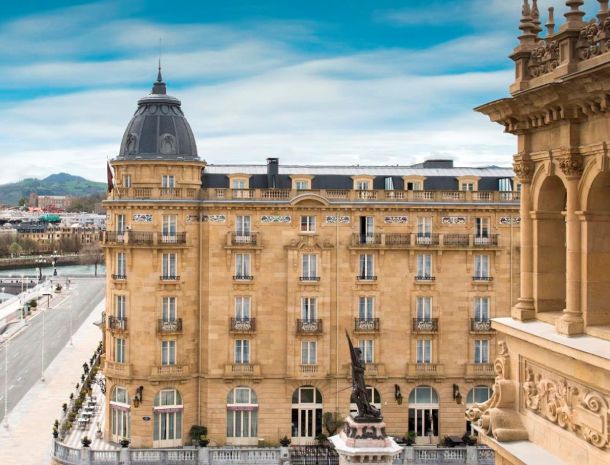
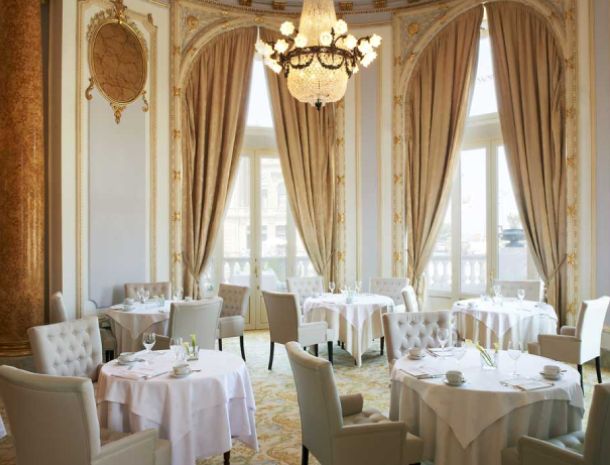
Victoria Eugenia Theatre
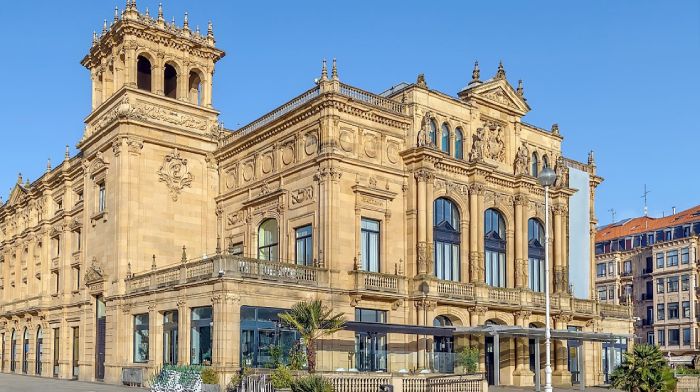
A stone's throw from the María Cristina, the Victoria Eugenia Theatre co-stars along with the hotel. Also opened in 1912, its Renaissance façade and delicate touches inside make it one of a kind. Nowadays it is one of the city's main culture spots.
A curiosity: The first San Sebastián International Film Festival was held here in 1953.
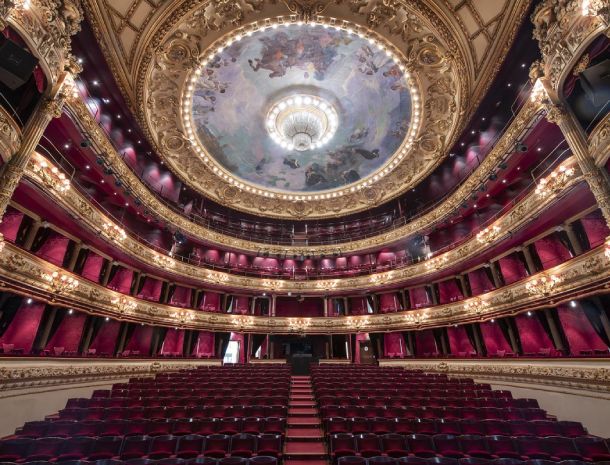

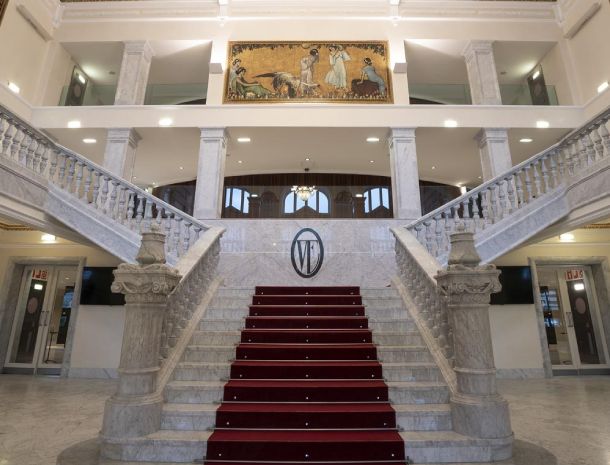
Palacio Miramar
The Miramar Palace was commissioned in 1893 by Queen María Cristina, who bought the land to build her summer residence in San Sebastián. This spot was chosen thanks to its privileged location between La Concha Bay and Ondarreta. Nowadays the building is used for educational and cultural purposes.
A curiosity: To build the palace and its gardens it was necessary to move the San Sebastián Mártir Church, stone by stone - it now stands only a few metres from its original location.
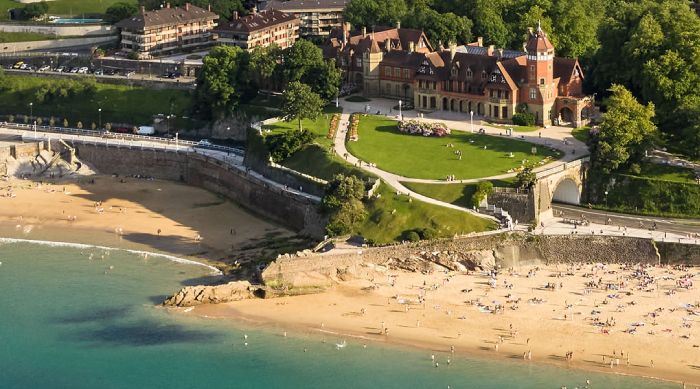

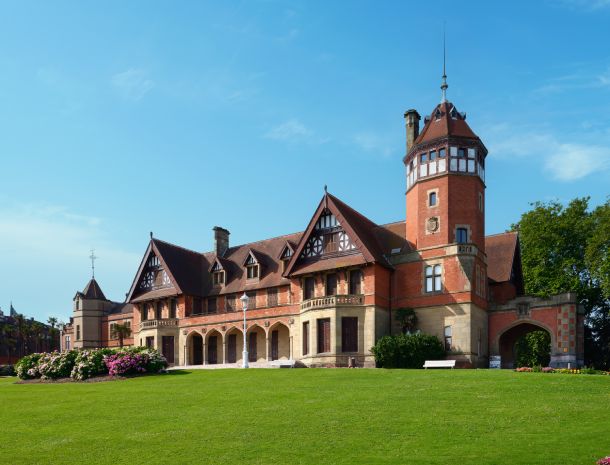
Donostia / San Sebastián Town Hall
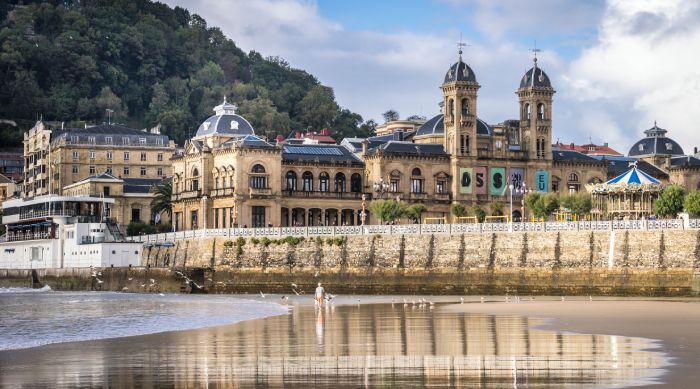
Inaugurated in 1887 as San Sebastián's Grand Casino, the building was one of the Belle Époque's leading symbols. Following the ban on gambling in 1924, it was used as a hospital during the Civil War, and became the Town Hall in 1947. It is still one of the city's most emblematic buildings thanks to Its architecture and location.
A curiosity: Two councillors fought a duel here with pistols in 1893, in the building's main meeting room.
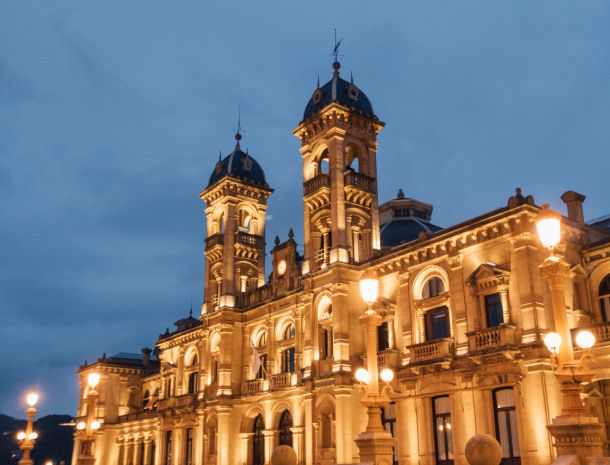
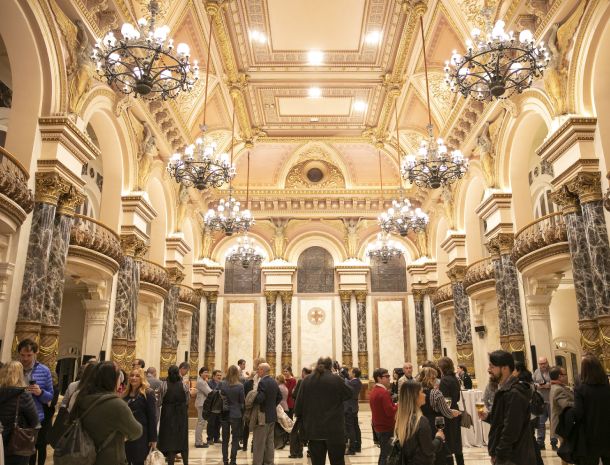
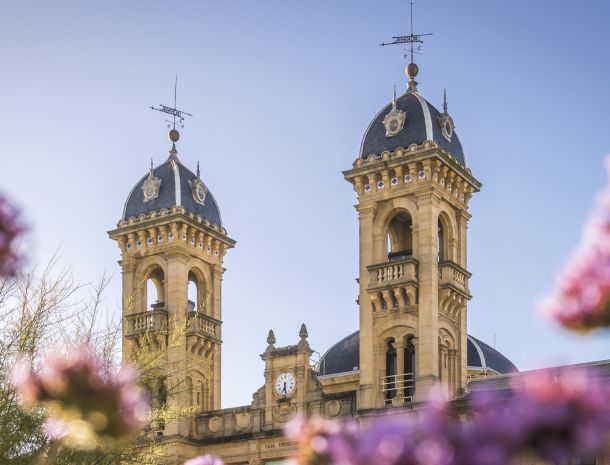
Hotel de Londres y de Inglaterra
Built as a mansion in 1865, Hotel de Londres y de Inglaterra was converted into a luxury hotel in the early 20th century. Located right on the La Concha sea promenade, it has played host to aristocrats, artists and illustrious personages since the 19th century. It is now one of the city's leading hotels, and famous for its spectacular views.
A curiosity: Mata Hari stayed at the hotel in 1916, giving rise to tales of espionage during the First World War. The suite she used now bears her name, and still contains some of her personal effects.
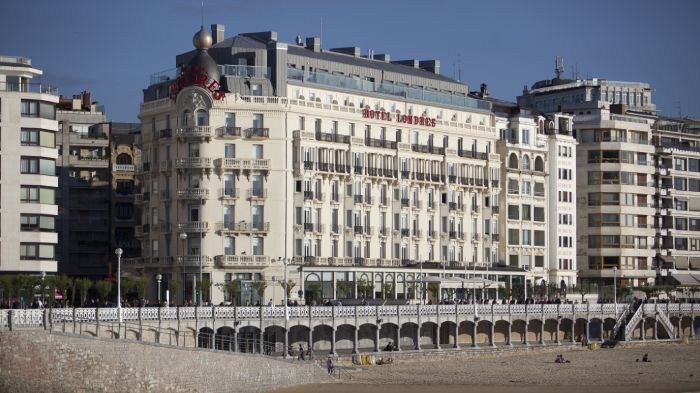
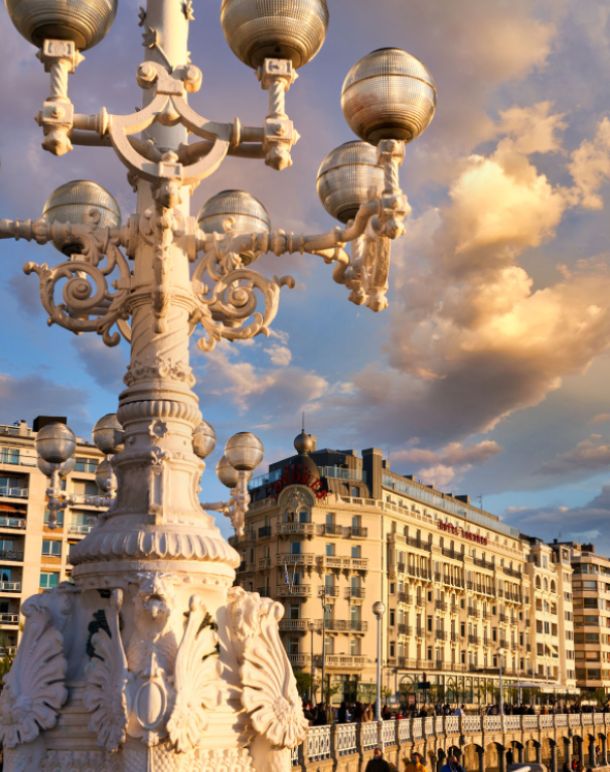
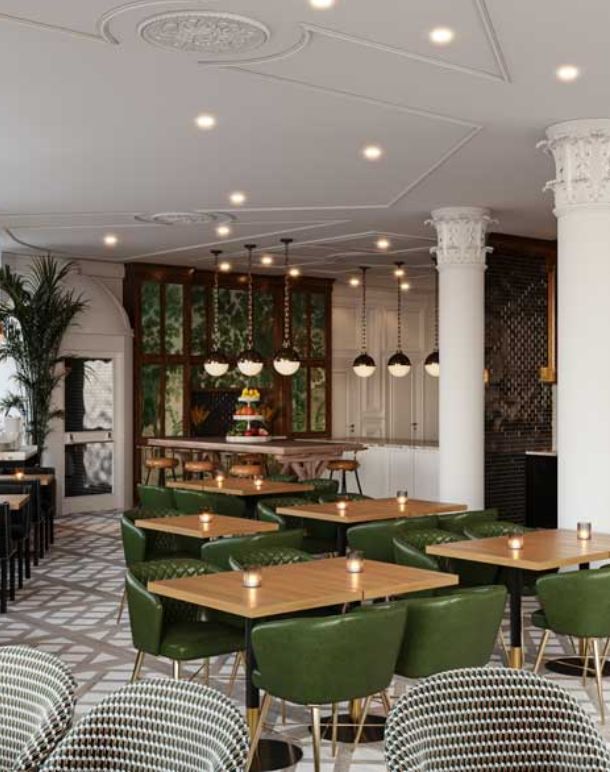
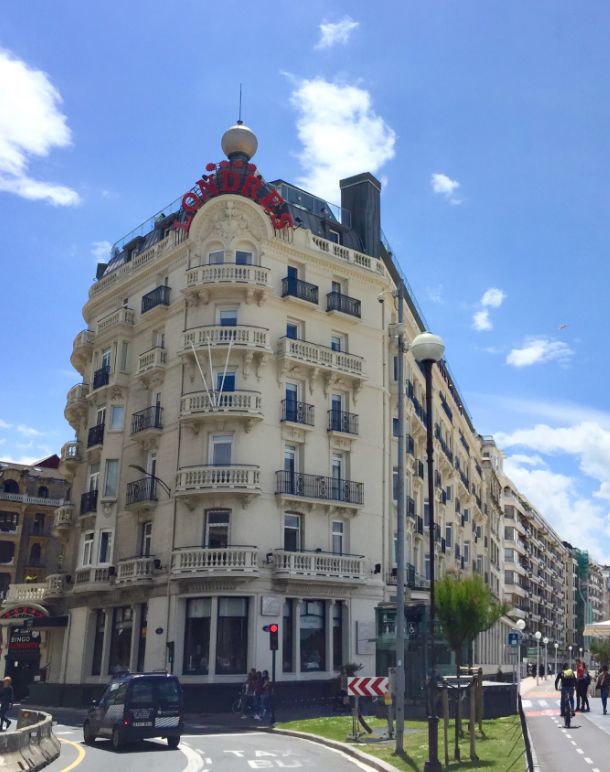
San Sebastián Royal Nautical Club
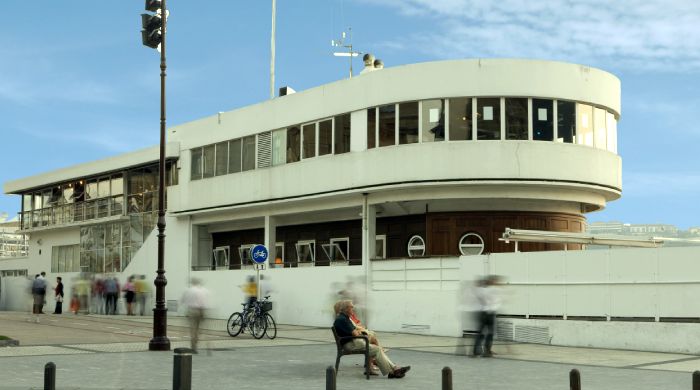
Founded in 1896 by a number of sailing enthusiasts, Real Club Náutico built its current premises in 1929. The building, inspired by the shape of a moored boat, is a jewel of architectural rationalism. It was declared an Item of Cultural Interest in the Monument category.
A curiosity: The "gabarrón" lighters that can be seen nowadays every summer in La Concha bay were originally the Nautical Club's idea. The first floating leisure dock emerged in 1896.
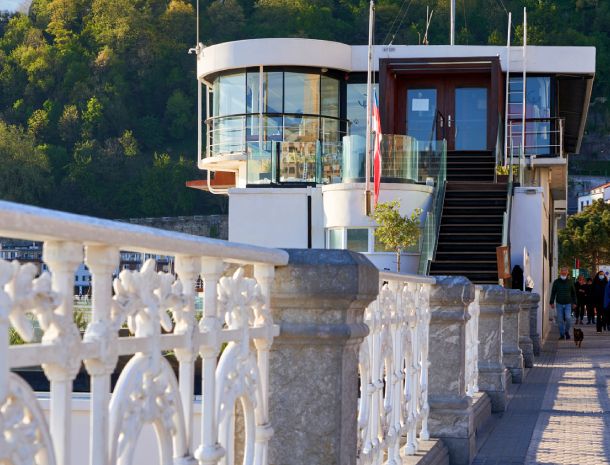
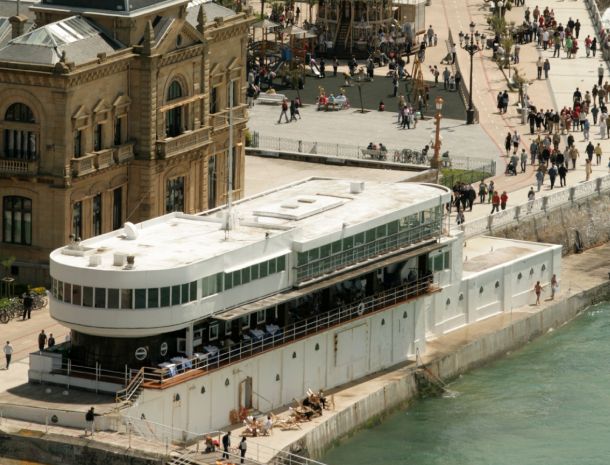
María Cristina Bridge
The main feature of the María Cristina Bridge is its four 18-metre obelisks topped by mythological sculptures symbolising peace and progress. Inspired by the Pont Alexandre III Bridge in Paris, they reflect the French influence on San Sebastián during the Belle Époque. The bridge's handrails and lamps complete the decoration with maritime motifs and allegorical figures. A genuine symbol of the city's architectural splendour in the early 20th century.
A curiosity: It was built in record time: in only 9 months. The bridge was opened on 20 January 1905, coinciding with San Sebastián's feast day and a huge ceremony.
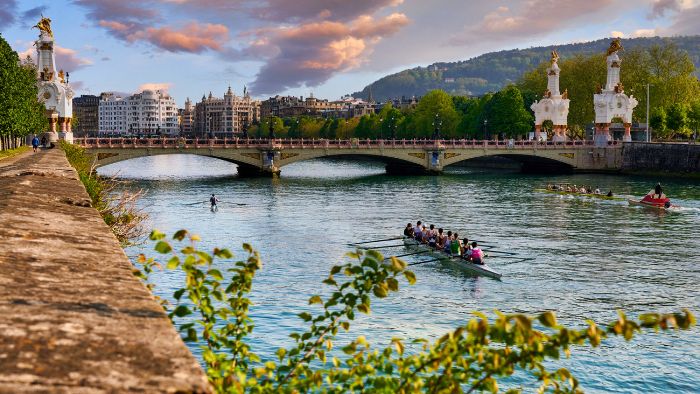

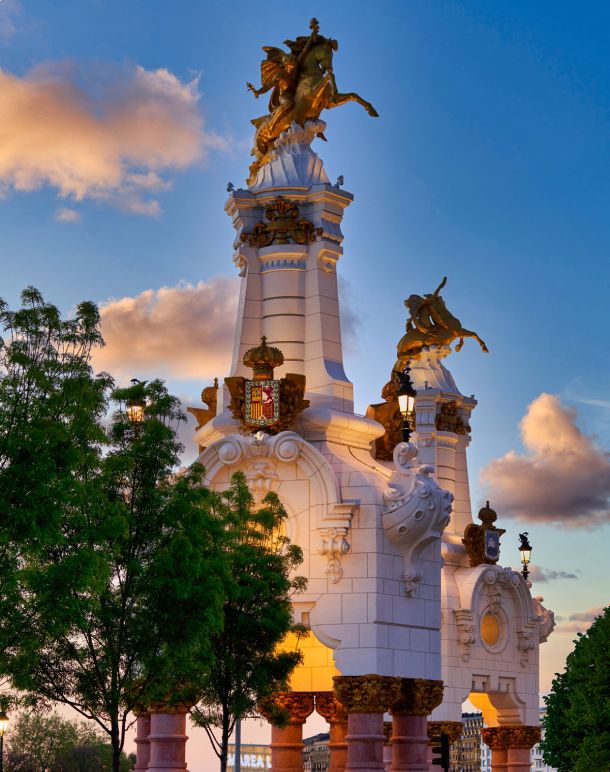
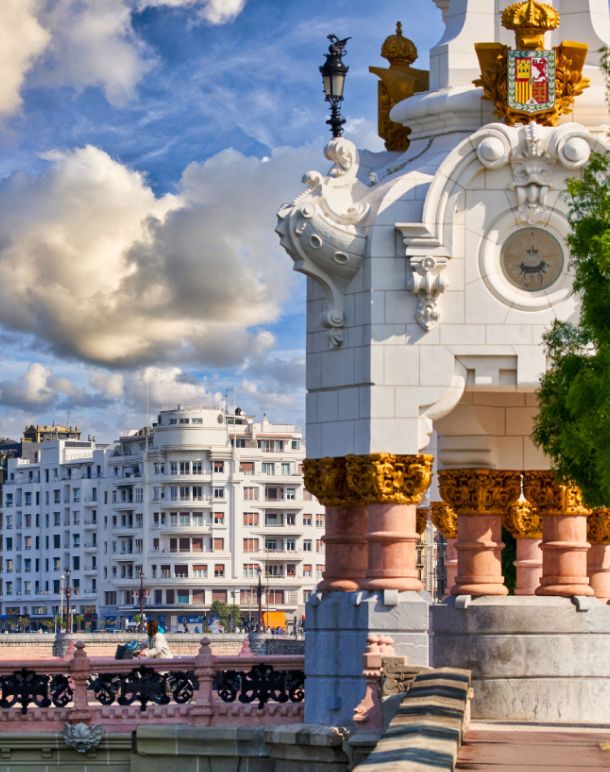
La Perla
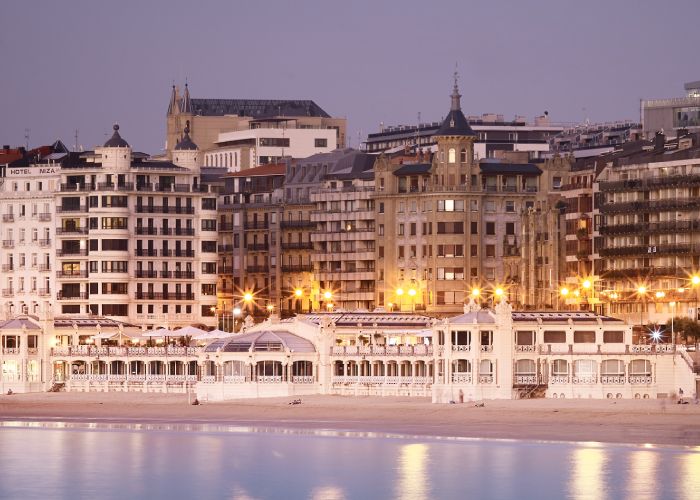
La Perla opened in 1868 as “Baños del Príncipe Alfonso”. The original spa was built from timber at the same location as today: right in the middle of La Concha beach. After the fall of Isabel II, its name was changed to “Baños de La Perla del Océano”. In the early 20th century it became one of Europe's most modern hydrotherapy facilities, very much hand in hand with the boom of luxury tourism in San Sebastián. It is still a major reference nowadays, as one of the most prestigious urban thalassotherapy centres on the continent.
A curiosity: In the 60s La Perla operated as a dance hall frequented by top orchestras and artistes, and became one of the city's liveliest establishments.
